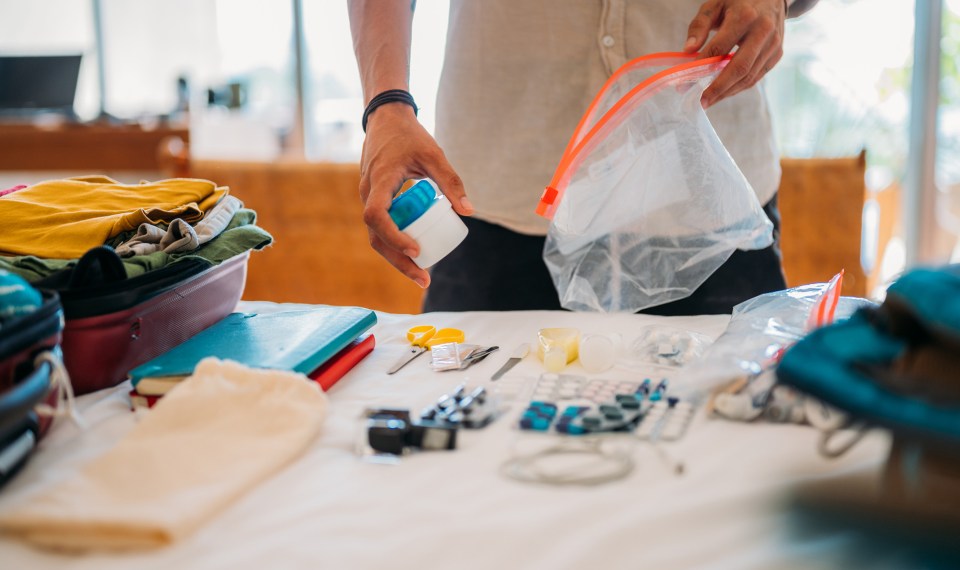Summertime is here which means traveling to the beach or to see family members for most. We all know to pack the essentials like underwear, socks, and toothbrush, but how do we handle traveling with medications? Let’s try and answer a few common questions about managing medications while traveling.
What If the Travel Date is Around the Time a Refill is Due?
It’s recommended to check medication supply about a week before an extended trip to ensure there is enough to last the entire trip. Most insurance providers will allow a 30-day supply of medication to be refilled within five to seven days before the supply runs out and about 10-14 days for a 90-day supply.
If you see that you are within that window, it’s best to call the pharmacy and get a refill of your medication before you head off on your trip.
What If You Forget Your Medications?
If you’re unable to refill your medications before the trip or forgot to take them with you, most chain retail pharmacies will provide up to a three-day emergency supply of non-controlled medications if you have filled with that chain before. Please note that this is only available if you have remaining refills on the prescription as that three-day supply will come out of a future refill. So instead of getting 30 tablets when you come home and refill it, they will provide you with 27 tablets, as you used three for the emergency supply.
Will the TSA Allow Medications Onboard in a Carry-On?
The TSA does allow you to pack medications in a carry-on, but there are some stipulations.
You are not required to keep medications in their original bottles or packages. However, the process could be smoother if you do. Remember to check the rules regarding prescription medication in the state or country to which you’re traveling; local laws might require prescriptions to be in their original package.
Consider packing your medication in a checked bag to avoid any potential delays unless you require it during the flight. If that’s the case, you are permitted to pack them in containers larger than 3.4 ounces if it is in a “reasonable quantity” for your flight. If you do have any medically necessary liquid in your carry-on, notify the TSA agent at the beginning of the screening process.
When Do I Take My Scheduled Medications If I am Traveling to a Different Time Zone?
Most medications should be taken based on the time since your last dose. Usually, it is safe to take scheduled medication within a four-hour window (two hours before or after the scheduled time). If you forget to take your medication within the scheduled window, you can skip that dose and start again with the next scheduled time.
Do not double up on the dose to try and catch up. If you’re traveling across multiple time zones that span more than three hours, try to take your medication at your home time zone’s normal scheduled time when you first arrive. You can take your medications during the new time zone’s time starting with the next dose.
And always be sure to ask your primary doctor or pharmacist if you have any questions regarding your medications.
Will Travel Impact Side Effects?
Some medication have side effects to watch out for when travelling or spending time outdoors.
Oral contraceptives and hormone based medications can increase your risk of Deep Vein Thrombosis (DVT) on longer flights and car travel. This is when blood pools in your legs and forms clots. Some conditions you may be treated for like diabetes or heart disease can increase that risk. When travelling, try to stay hydrated and get up every two hours and move around. Ask your doctor if compression socks would be helpful during travel.
Do not wear medication patches into hot tubs or saunas and keep covered from sunlight. This will ensure you don’t get too much of your medication at once or get burned underneath the patch.
Some medications may make you prone to photosensitivity (skin rash from the sun) or dehydration. To prevent photosensitivity, cover up with sun protective clothing or SPF 30. Mild symptoms can be treated like sunburn with cool compresses and over-the-counter hydrocortisone applied to skin.
Jennifer Chapman, a pharmacist at Encompass Health Rehabilitation Hospital of Pensacola, Florida, contributed to this post.
The content of this site is for informational purposes only and should not be taken as professional medical advice. Always seek the advice of your physician or other qualified healthcare provider with any questions you may have regarding any medical conditions or treatments.




